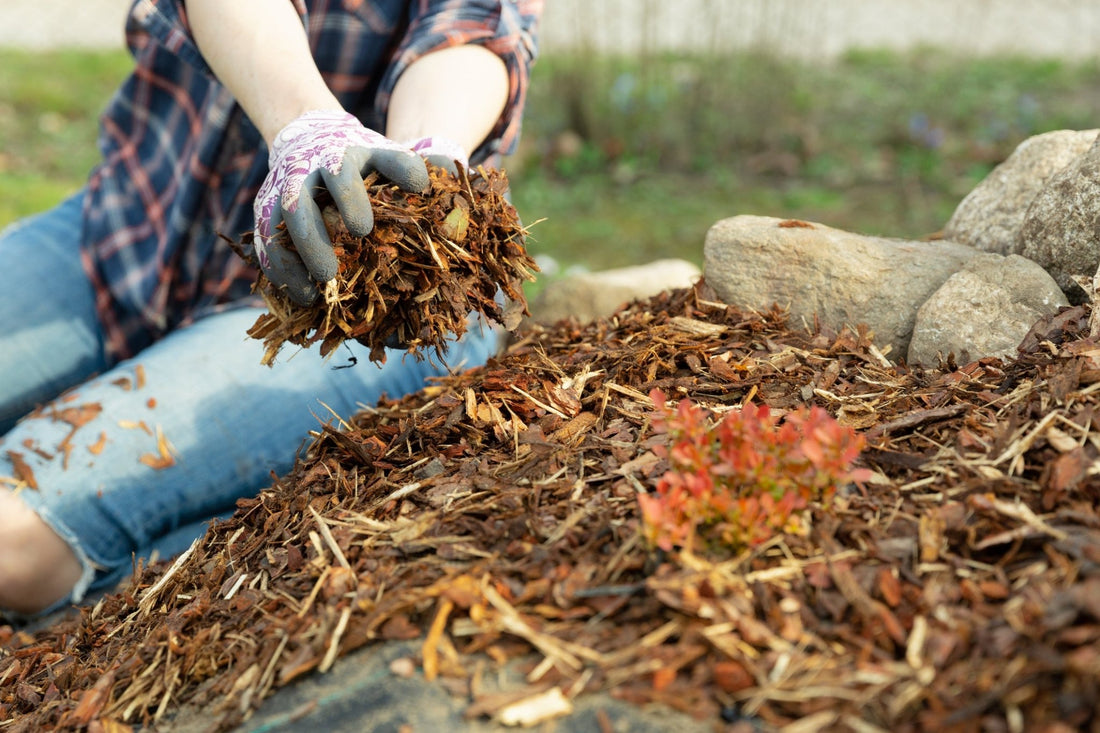Why Wood Mulch is Your Garden's Best Friend
Mulching is like wrapping your garden in a cozy, protective blanket. But instead of yarn, we're talking wood—wood mulch, to be exact. If you’re gardening in Georgina, where winters can be harsh, and summers unpredictable, wood mulch is the unsung hero that keeps your garden thriving year-round. So, let’s dig into what wood mulch is, why you should be using it, how to mulch like a pro, and what parts of your garden could benefit from this wooden wonder.
What is Wood Mulch?
Wood mulch is essentially the shredded bark that you spread around your garden beds. It comes from trees (surprise!), and it’s like a cozy blanket for your plants—except instead of keeping them warm, it helps retain moisture, regulate soil temperature, and keeps those pesky weeds at bay.

Why Mulch?
- Moisture Retention: Wood mulch acts like a sponge, soaking up rainwater and slowly releasing it into the soil. This is particularly useful in Keswick, where summer can swing from torrential downpours to dry spells. With mulch, your plants won’t be gasping for water on those hot, dry days.
- Temperature Control: In Georgina, where the seasons can flip like a switch, maintaining consistent soil temperature is key. Mulch helps insulate the soil, keeping it warmer in the winter and cooler in the summer. It’s like giving your garden its own climate control system.
- Weed Suppression: Nobody likes weeding, and wood mulch can drastically cut down on your weeding time. By covering the soil, mulch blocks sunlight from reaching weed seeds, which helps prevent them from sprouting in the first place. Think of it as the bouncer at your garden’s door, keeping the riffraff out.
- Soil Health: As wood mulch breaks down, it adds organic matter to your soil. This improves soil structure, increases fertility, and feeds the beneficial microbes that keep your garden thriving.
- Erosion Prevention: Mulch holds soil in place, reducing the risk of erosion from heavy rain or wind. This is especially important on slopes or in areas with loose, sandy soil.
- Aesthetic Appeal: Let’s be honest, a garden bed neatly tucked under a layer of mulch just looks better. It gives your garden a polished, well-maintained appearance.
How to Mulch Like a Pro
Mulching isn’t rocket science, but there are some tricks to doing it right:
- Choose Your Mulch: Not all wood mulch is created equal. Opt for natural wood mulch to avoid dyes that could harm your plants especially in vegetable gardens. Cedar and pine are popular choices for their durability and pleasant aroma.
- Prepare the Area: Before you mulch, weed the area and water it thoroughly. This ensures your plants have a good start before you cover up the soil..
- Lay It Down: Spread the mulch evenly over your garden beds, aiming for a depth of about 2-4". Too thin, and it won’t do much good; too thick, and you might suffocate your plants.
- Leave Breathing Room: Keep the mulch a few inches away from the base of trees, shrubs, and plants. Piling it up against the stems or trunks can cause rot and invite pests.
- Replenish as Needed: Wood mulch breaks down over time, so you’ll need to top it up every year or two. Keep an eye on the depth and add more as needed to maintain that 2-4" layer.

What Can You Apply Mulch To?
Wood mulch isn’t picky; it’s versatile and can be used in various parts of your garden:
- Garden Beds: Perfect for flower beds, vegetable gardens, and around shrubs. It keeps the soil cool, moist, and weed-free while adding a polished look.
- Pathways: Lay it down between garden rows or along walkways for a natural, rustic path that’s easy on the feet and great at suppressing weeds.
- Trees and Shrubs: Mulching around trees and shrubs helps retain moisture and protects the roots from temperature extremes.
- Containers: Yes, you can even mulch potted plants! A layer of mulch on top of the soil in containers helps retain moisture and reduce soil compaction.
So there you have it, in Keswick, where Mother Nature can be a bit unpredictable, wood mulch is the steady friend your garden needs. It’s like a multi-tool for your landscape—preventing weeds, retaining moisture, enriching soil, and more. So, whether you’re planting perennials, growing veggies, or just trying to keep your garden beds looking neat, wood mulch has got your back. Just remember to spread it evenly, give your plants some breathing room, and refresh it as needed.
Happy gardening!
Check out our bulk mulches here: https://shop.ggconline.ca/products/pine-mulch




